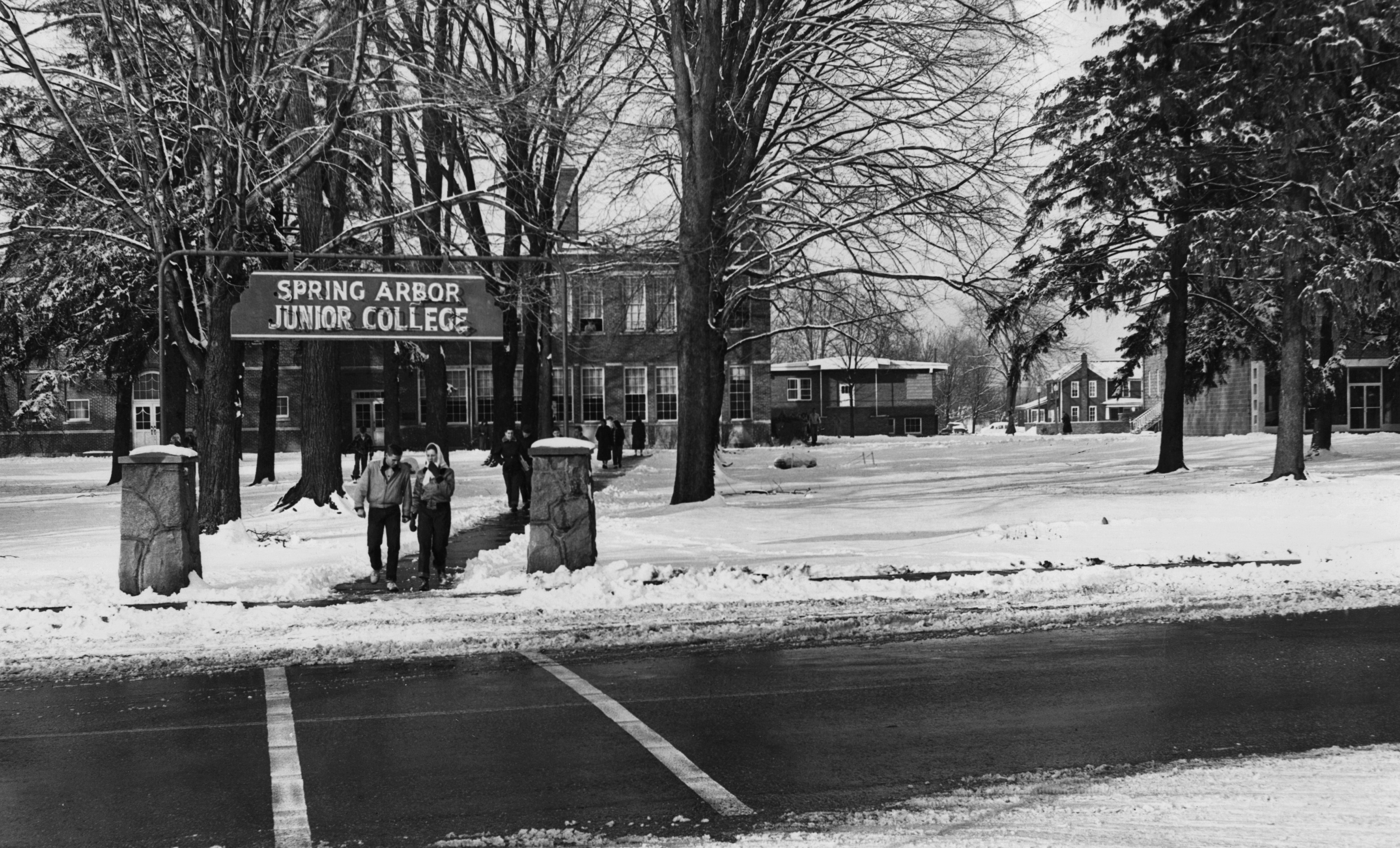Our History

A Free Methodist Foundation
In 1860, the year Abraham Lincoln was elected president of the United States, B. T. Roberts organized the Free Methodist denomination in New York. Called to minister to the poor, the early Free Methodists advocated for freedom for slaves and free pews for all worshipers. Three years later, in 1863, Edward Payson Hart began to hold Free Methodist evangelistic meetings in Michigan. E.P. Hart would become the driving force behind the establishment of Spring Arbor Seminary, an academy for elementary and secondary grades, in 1873. The seminary was located near the site of a former Potawatomi Indian village, built on property that once belonged to Michigan Central College (now Hillsdale College). Devoted to the promotion of earnest Christianity and sound, solid learning, Spring Arbor Seminary was open to all children, regardless of religious conviction or belief.
The Shift Toward Higher Education
Spring Arbor Seminary celebrated its 50th anniversary in 1923 with the addition of a junior college. Over the next few terms, some college-level courses were added to the school’s catalog. In 1929, Spring Arbor Seminary became Spring Arbor Seminary and Junior College. As the school’s emphasis shifted toward higher education, primary and intermediate classes were discontinued.
Accreditation Milestone
In 1960, Spring Arbor Seminary and Junior College achieved accreditation by the North Central Association of Colleges and Schools. As a result, the school was renamed Spring Arbor College. High school classes were discontinued, as plans were developed to turn the institution into a four-year college. Under the leadership of President David McKenna, Spring Arbor College launched its four-year program in 1963, graduating its first senior class in 1965.
On the Cutting Edge
In the early 1980s, Spring Arbor College began offering the first of its degree completion programs for adult learners in nearby Jackson. The initial class of students studied management of human resources and graduated in 1983. Over subsequent years, the college continued to expand, opening additional sites across Michigan and adding a variety of associate and bachelor’s degree programs for working adults. Graduate education was introduced to the Spring Arbor sites in 1994, beginning with the Master of Arts in Management, which is now the Master of Business Administration. As a school on the cutting edge of accessible education, Spring Arbor College would quickly become a leader in the design of degree completion programs.
A College Graduated
On April 30, 2001, Spring Arbor College became Spring Arbor University. The school’s new name recognized its growth, from a seminary for elementary and secondary students into an accredited university, with a wide range of degree offerings and locations across the state. It likewise acknowledged the school’s ambitious vision for the future, rooted in our rich spiritual heritage and the Spring Arbor University Concept.
The Concept
Spring Arbor University is a community of learners distinguished by our lifelong involvement in the study and application of the liberal arts, total commitment to Jesus Christ as the perspective for learning, and critical participation in the contemporary world.
Since 1873, Spring Arbor University has been committed to bringing the light of Christ into everything we do. Join our legacy by applying for admission today!